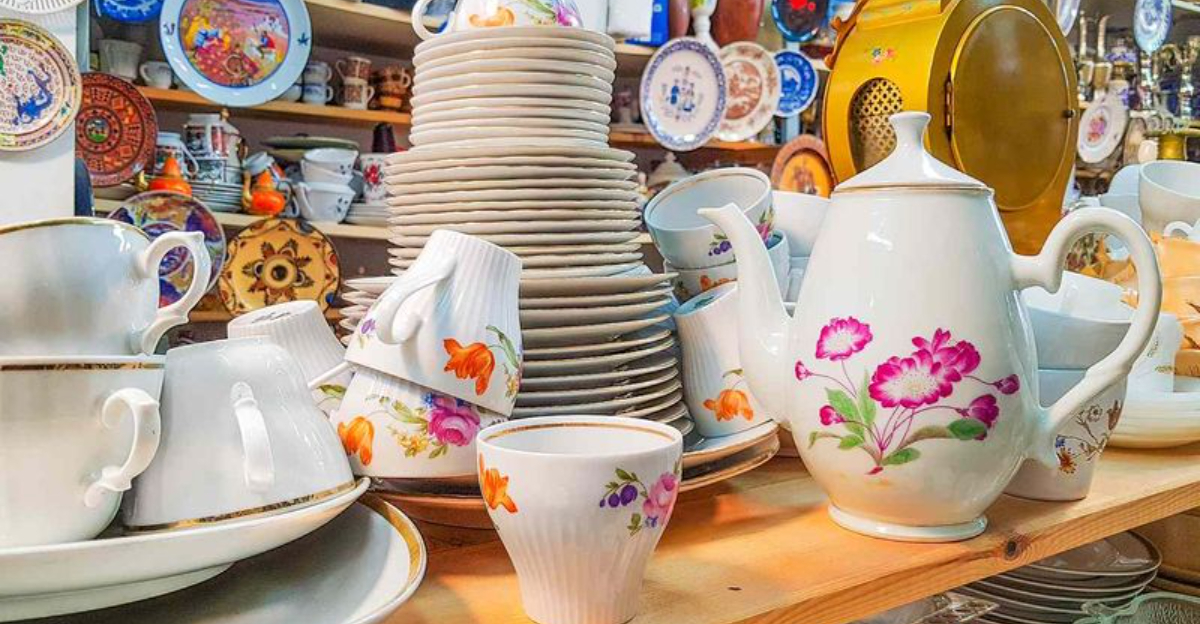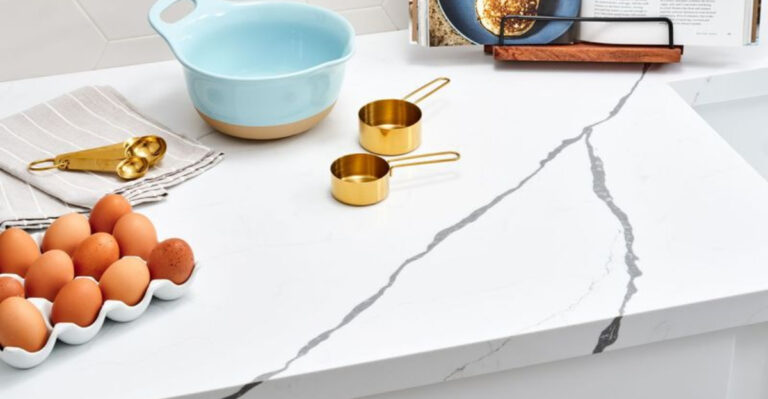10 “Useful” Antique Market Finds Pro Thrifters Won’t Buy (Plus 10 They Always Skip)
Treasure hunting at antique markets is one of my favorite weekend thrills, you never know what hidden gems you’ll find. But over the years, I’ve learned that not everything that looks charming is worth dragging home.
It took a few regrets (and a weird-smelling chair) to develop a gut instinct for what to skip, no matter how good the deal seems.
From safety hazards to serious hygiene issues, there are just some items seasoned thrifters like me know to leave behind. Trust me, these are the pieces that always end up being more trouble than treasure.
1. Upholstered Chairs And Sofas
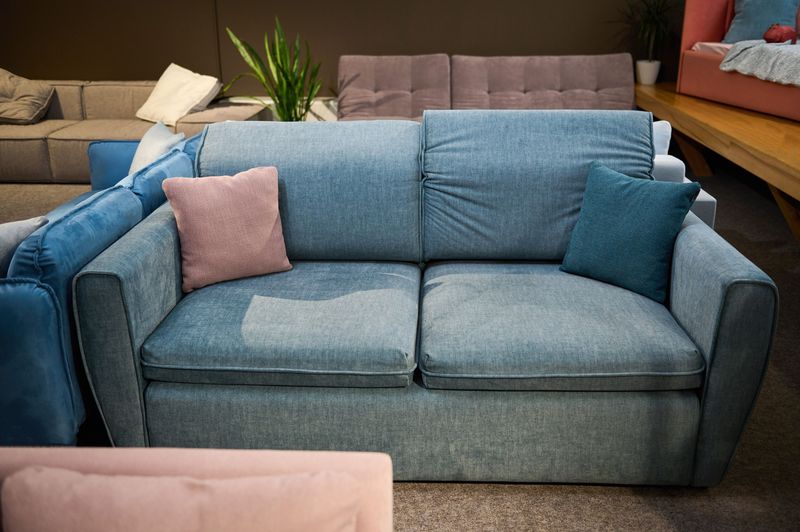
Ever wondered what lurks beneath that charming vintage velvet? Fabric-covered furniture acts like a sponge for odors, stains, and critters you can’t see. Professional thrifters pass on these plush pieces because deep cleaning rarely removes all the hidden nasties.
Reupholstering costs often exceed the price of buying new. Even when a piece looks clean, it could harbor bed bugs, dust mites, or years of someone else’s skin cells and pet hair.
2. Non-Stick Cookware
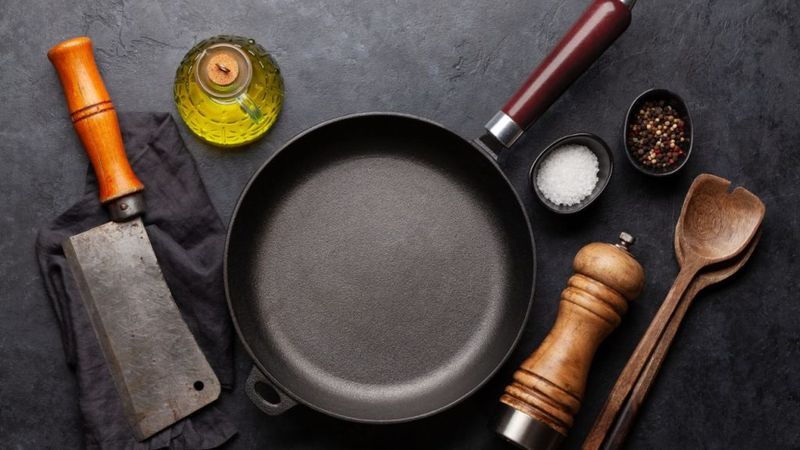
Bargain hunters beware! That scratched-up non-stick pan might cost you more than just five bucks. Older non-stick cookware often contains PFOA, a chemical linked to health concerns that was only phased out in recent years.
Scratched coatings release particles into your food, especially when heated. Pro thrifters always leave these pans behind, knowing even a small scrape compromises both safety and function.
3. Old Mattresses
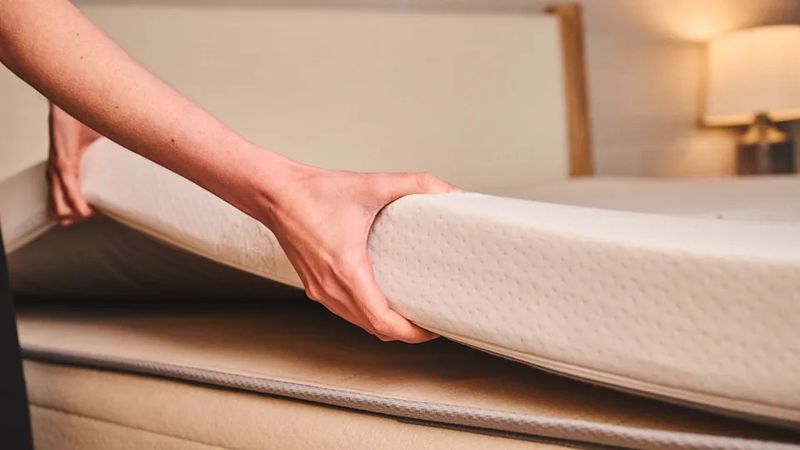
Sleep tight? Not with a secondhand mattress! Veteran thrifters wouldn’t dream of bringing home someone else’s sleep surface. These bulky items collect bodily fluids, dust mites, and bedbugs that no amount of cleaning can fully remove.
Many states actually prohibit reselling used mattresses without professional sanitizing. Your back and immune system deserve better than mystery stains and unseen allergens lurking in those springs and padding.
4. Used Humidifiers Or Dehumidifiers
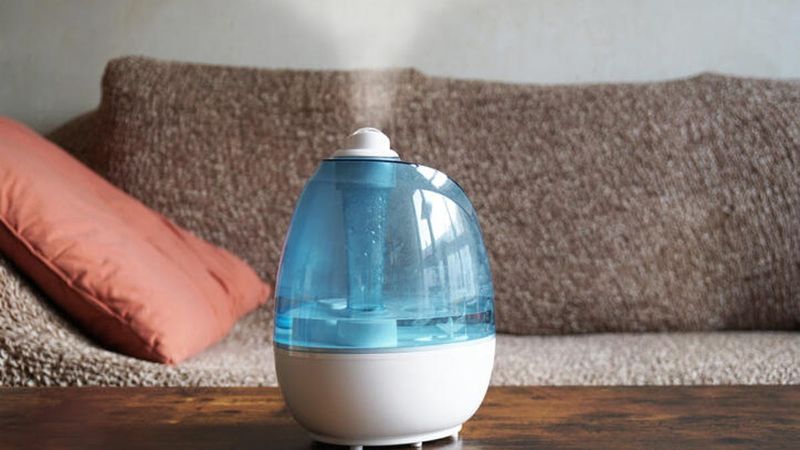
Moisture machines make fantastic breeding grounds for mold and bacteria. Savvy thrifters steer clear of these appliances since the internal components rarely get properly cleaned between owners.
Even if they appear spotless on the outside, the hidden water chambers and filters could be hosting entire ecosystems of funk. The potential respiratory issues from breathing in whatever’s growing inside simply aren’t worth the savings.
5. Pre-Owned Small Kitchen Appliances
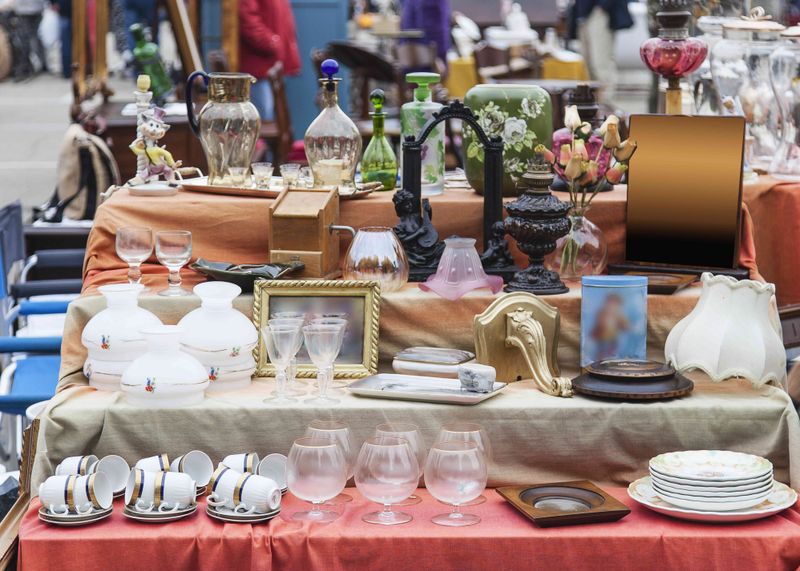
That cute vintage blender might look Instagram-worthy, but experienced thrifters leave small appliances on the shelf. Older models lack safety features of modern counterparts and often hide frayed wires or motor issues that could turn dangerous.
Food residue in hard-to-clean crevices creates health hazards. Plus, these gadgets typically have shorter lifespans than you’d expect. When a toaster costs $15 new, gambling on a used one hardly makes sense.
6. Vintage Lamps With Frayed Cords
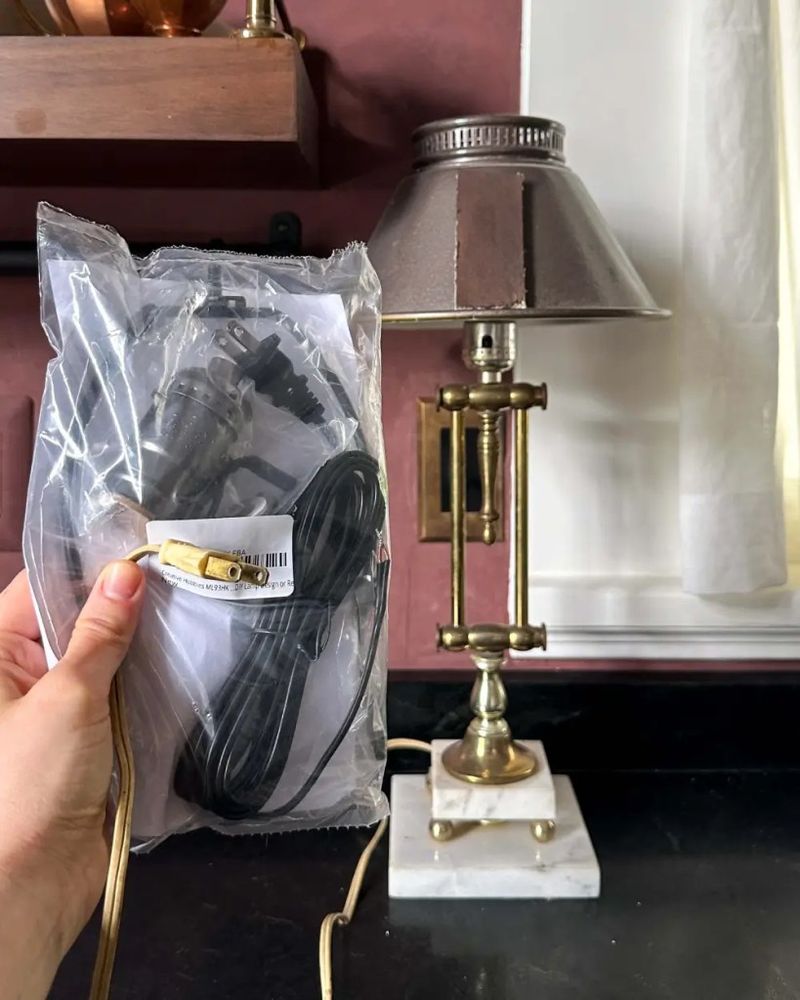
Lighting up your space shouldn’t involve firefighting skills! Expert thrifters immediately check lamp cords for cracks, fraying, or outdated wiring – then usually walk away. Rewiring costs quickly erase any bargain you thought you found.
Old lamp sockets can spark or short out when plugged in. Some vintage beauties even contain asbestos components or lead paint. No matter how gorgeous that mid-century lamp base looks, electrical safety trumps decorative appeal.
7. Secondhand Area Rugs
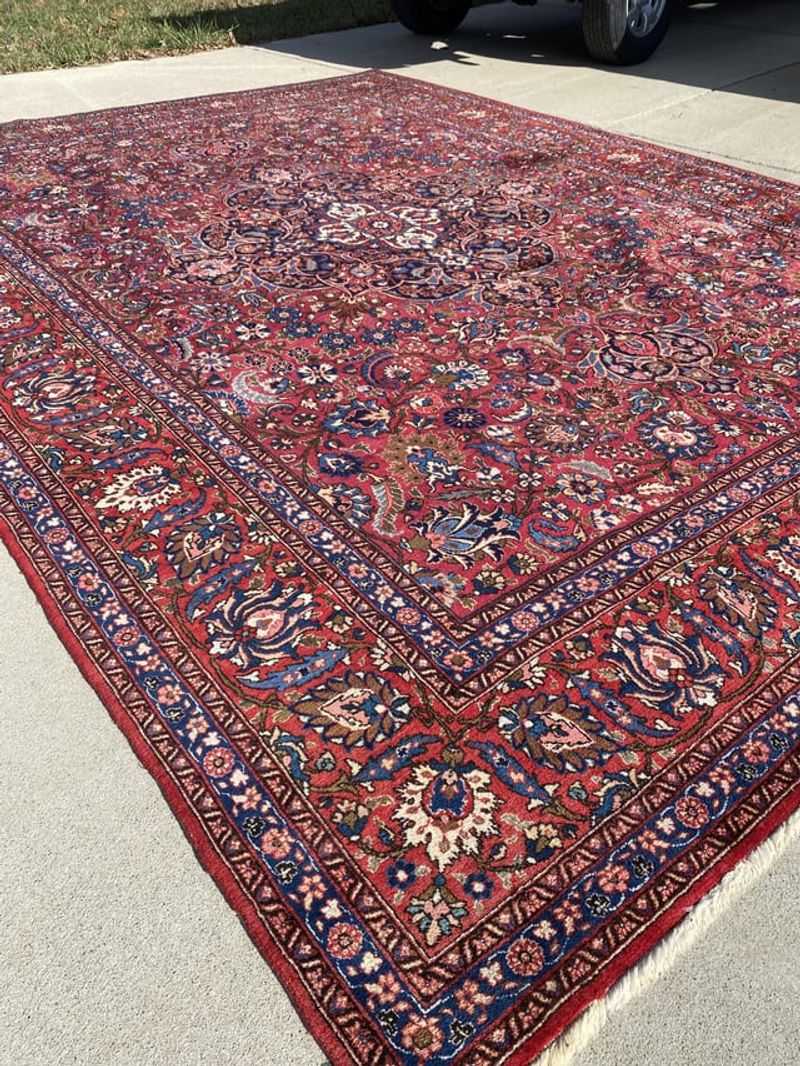
Floor coverings tell tales of their previous homes through stains, smells, and uninvited guests. Professional thrifters know rugs are nearly impossible to sanitize completely, making them prime real estate for dust mites, pet accidents, and spill residue.
Large rugs are expensive to clean properly. Smaller ones rarely justify the cleaning cost compared to buying new. Unless you’re finding a genuine Persian for pennies, those mystery odors that emerge on humid days will have you regretting your purchase.
8. Worn Wooden Cutting Boards
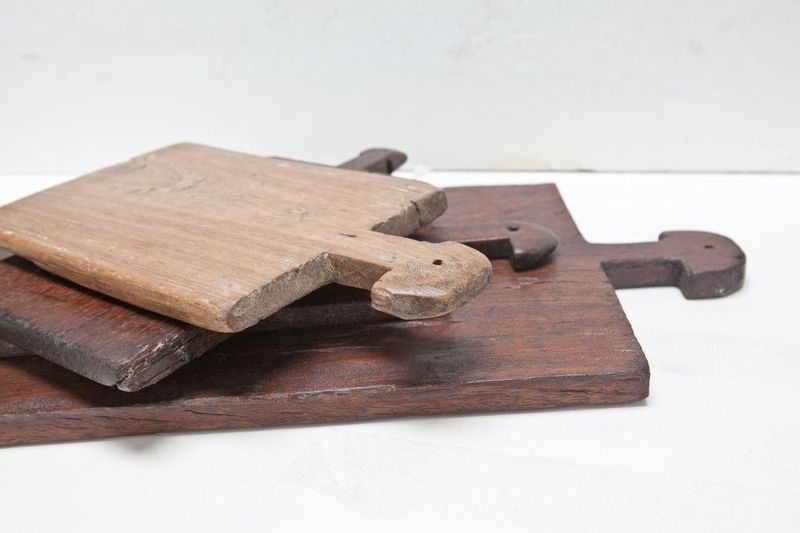
Knife-scarred cutting boards harbor a secret science experiment in every groove. Smart thrifters bypass these kitchen staples because deep cuts create perfect hiding spots for bacteria, mold, and food particles that never fully wash away.
Previous owners might have chopped raw meat on that surface for years. Wood absorbs liquids, odors, and whatever was cut on it. No amount of sanding or bleaching can guarantee a truly clean slate for your food prep.
9. Opened Paint Or Finishes
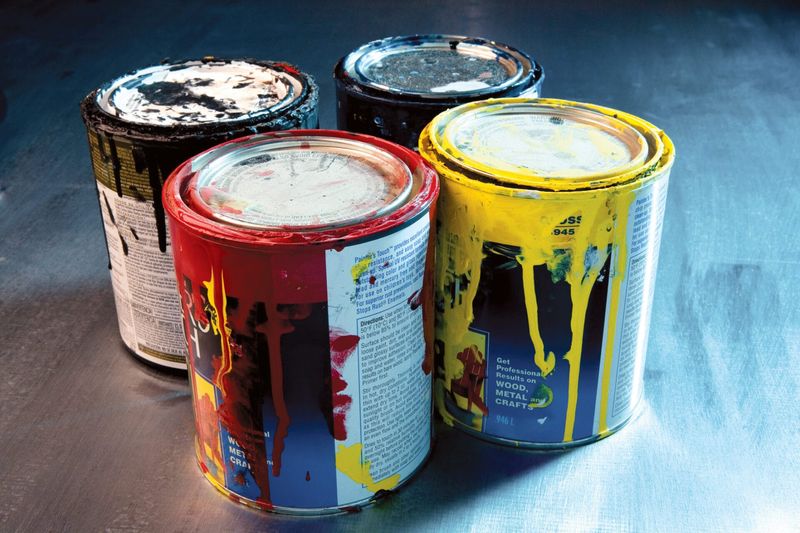
Mystery liquids in crusty containers spell disaster for your DIY projects. Seasoned thrifters never gamble on partially used paint cans or wood finishes because chemical compounds break down over time, creating unpredictable results.
Previously opened products might contain contaminants, have separated beyond rescue, or simply not match the color on the lid. Many old finishes contain now-banned ingredients like lead. Your walls deserve better than someone’s leftover, possibly toxic, decade-old paint job.
10. Used Throw Pillows
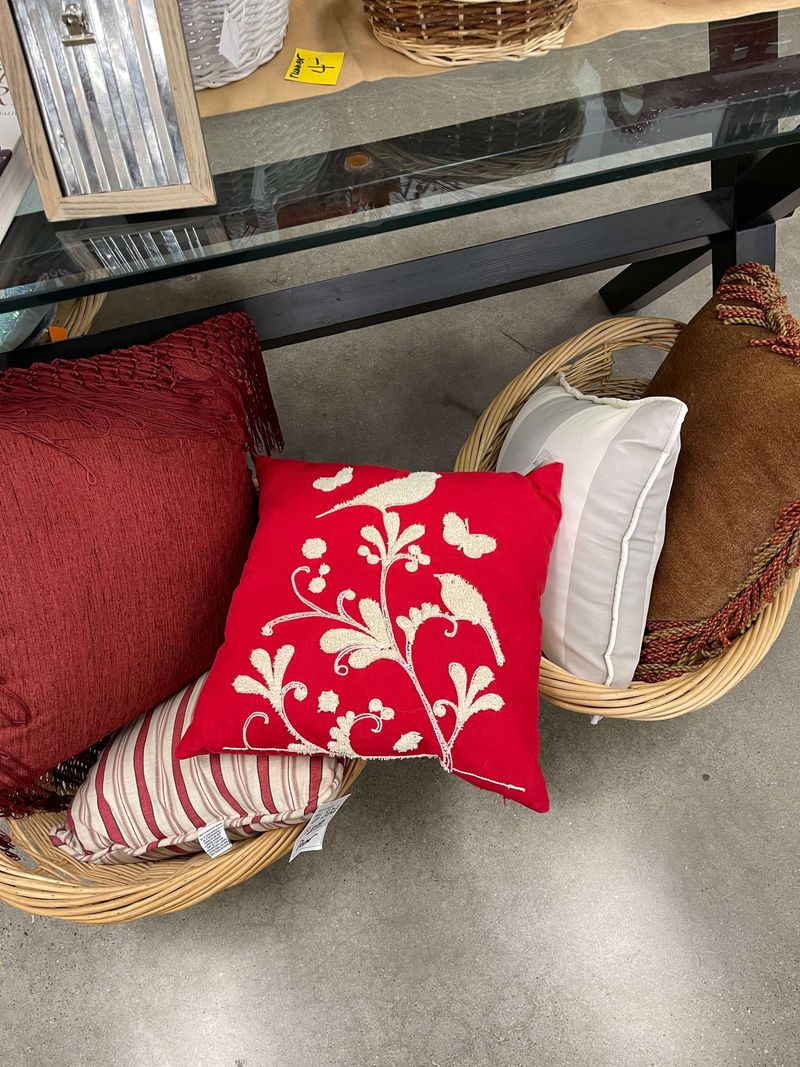
Fluffy face-resting spots collect drool, skin cells, and hair products from their previous owners. Veteran thrifters pass on these fabric cushions since they’re nearly impossible to deep clean without damaging the filling.
Pillow stuffing creates the perfect environment for dust mites and allergens. Even if the cover looks clean, what’s inside remains a mystery. For items that regularly touch your face and cost relatively little new, the ick factor simply outweighs any potential savings.
1. Cracked Or Chipped Dishware
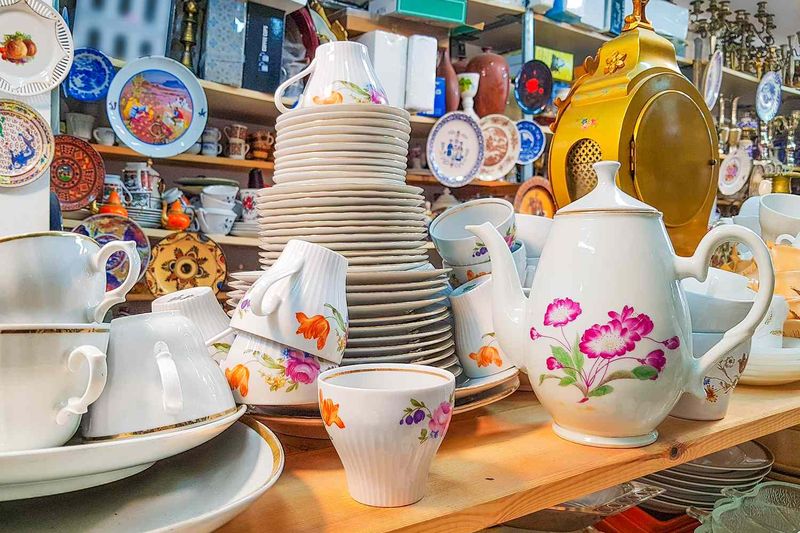
Bargain hunters beware of that adorable but damaged china! Hairline cracks aren’t just aesthetic problems – they harbor bacteria in impossible-to-clean crevices. Savvy thrifters know damaged dishes can suddenly fail, potentially shattering mid-meal or leaking hot liquids.
Chips on eating surfaces can cut lips or tongues. Older ceramics might contain lead or other toxic glazes that leach into food, especially through damaged areas. Pretty patterns aren’t worth the risk of ingesting harmful chemicals with your morning coffee.
2. Damaged Mirrors
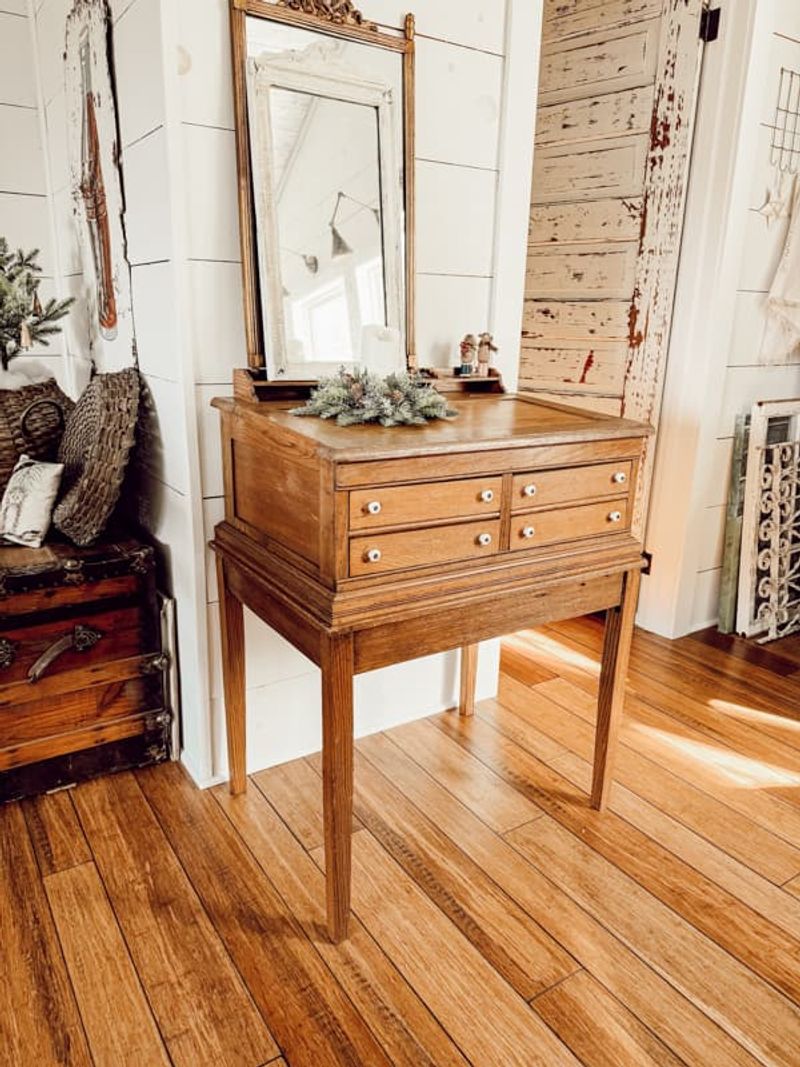
Superstitions aside, cracked mirrors pose genuine hazards! Expert thrifters immediately walk away from damaged reflective surfaces because even small cracks compromise structural integrity, creating future breaking points.
Silver backing often deteriorates around damage, spreading tarnish across the mirror. Fixing a damaged mirror typically costs more than buying new. Plus, those tiny glass particles that flake off damaged edges can embed in fingers or fall into nearby items, creating invisible hazards.
3. Rusty Metal Decor Pieces
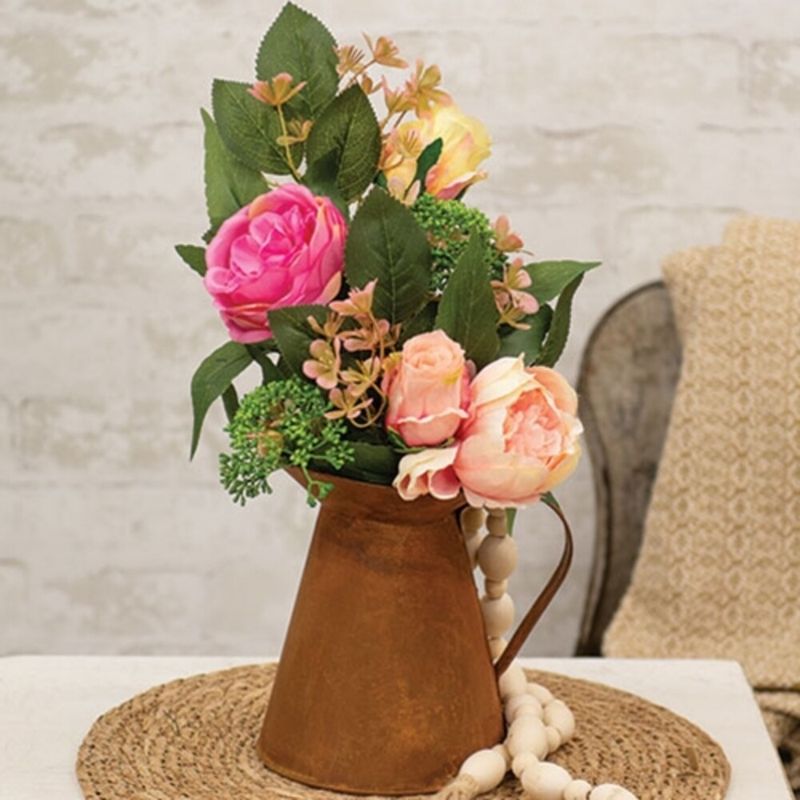
Orange flakes signify more than just character – they’re active deterioration! Seasoned thrifters avoid rusty metal items because rust continues spreading, weakening structural integrity and staining anything it touches.
Removing rust properly requires significant elbow grease and chemicals. The process often damages decorative finishes. Most concerning, rusty edges can cause nasty cuts that risk tetanus infection. That farmhouse-chic metal sign might look trendy now, but its crumbling condition will quickly become more eyesore than decor.
4. Outdated Smoke Detectors
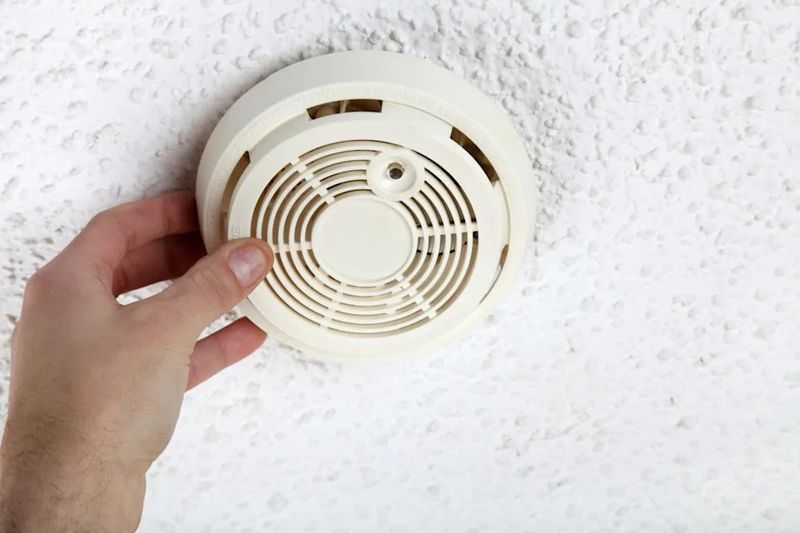
Life-saving devices shouldn’t come second-hand! Smart thrifters never gamble on used safety equipment since smoke detectors lose sensitivity over time, potentially failing when you need them most.
Older models lack modern features like carbon monoxide detection or interconnectivity. Some vintage units even contained radioactive materials. Considering new basic smoke detectors cost around $10, risking your family’s safety for a few dollars saved makes absolutely no sense.
5. Electric Blankets
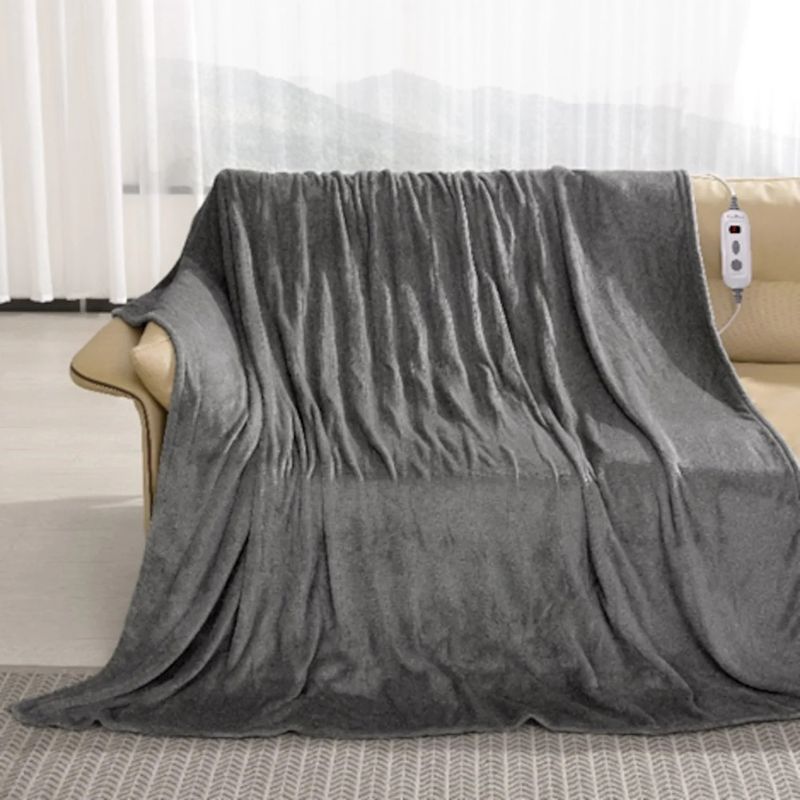
Cozy vibes shouldn’t come with fire risks! Veteran thrifters steer clear of secondhand electric blankets because internal wiring can fray or break without showing external damage. Previous owners might have folded or improperly stored them, creating dangerous hot spots.
Older models lack modern safety features like auto-shutoff. Even slightly damaged heating elements can cause burns or electrical fires. When something combines electricity with the place you sleep, buying new with warranties and safety certifications is the only smart choice.
6. Heavily Scratched Non-Antique Furniture
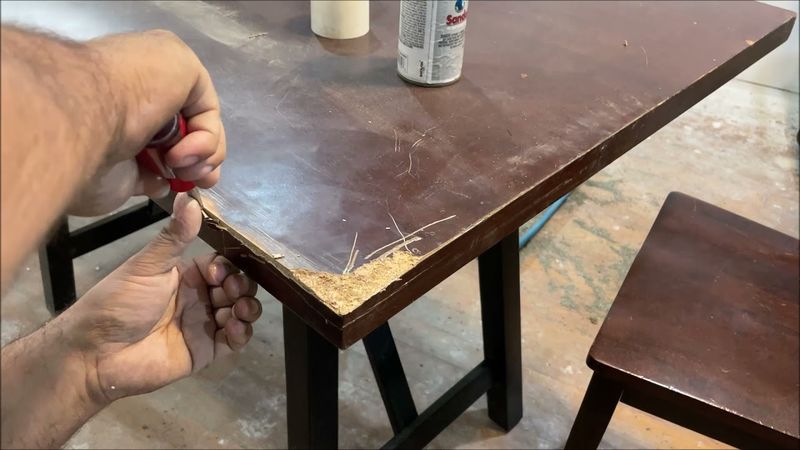
Faux wood veneer rarely deserves a second chance! Experienced thrifters pass on deeply scratched modern furniture because damage typically reveals cheap materials underneath fancy-looking surfaces.
Mass-produced pieces from the last few decades weren’t built for restoration – once damaged, they’re usually beyond economical repair. Laminate can’t be sanded like solid wood. Particle board swells permanently when exposed through scratches. Unlike genuine antiques that gain character with age, these items just look increasingly shabby without the chic.
7. Water-Damaged Artwork Or Prints

Those rippled edges tell a soggy tale! Professional thrifters immediately reject artwork showing water damage because moisture creates the perfect environment for mold growth between paper and frame.
Water stains continue spreading long after drying. Once paper fibers warp, they never truly flatten again. Worst of all, hidden mold spores can activate in your home’s humidity, potentially causing respiratory issues or spreading to nearby items. No matter how much you love that vintage print, water marks mean it’s destined for the trash.
8. Stained Curtains Or Drapes
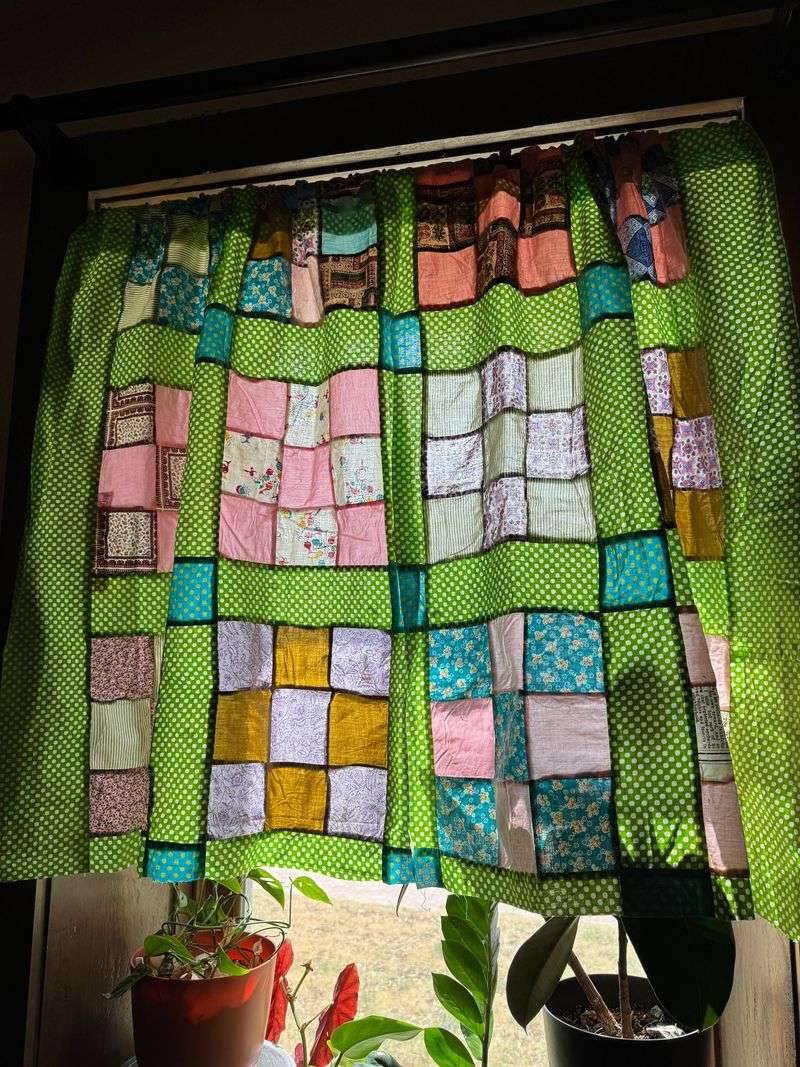
Window coverings collect decades of dust, smoke, and mystery splatters! Savvy thrifters skip secondhand drapes because fabric window treatments act like giant air filters, trapping airborne particles from their previous homes.
Sunlight breaks down fabric over time, weakening fibers even when colors look okay. Large fabric items are expensive to clean properly. Most concerning, older curtains might not meet modern fire safety standards. Given how affordable basic new curtains have become, gambling on someone else’s window history rarely makes sense.
9. Old Stuffed Animals Or Plush Toys
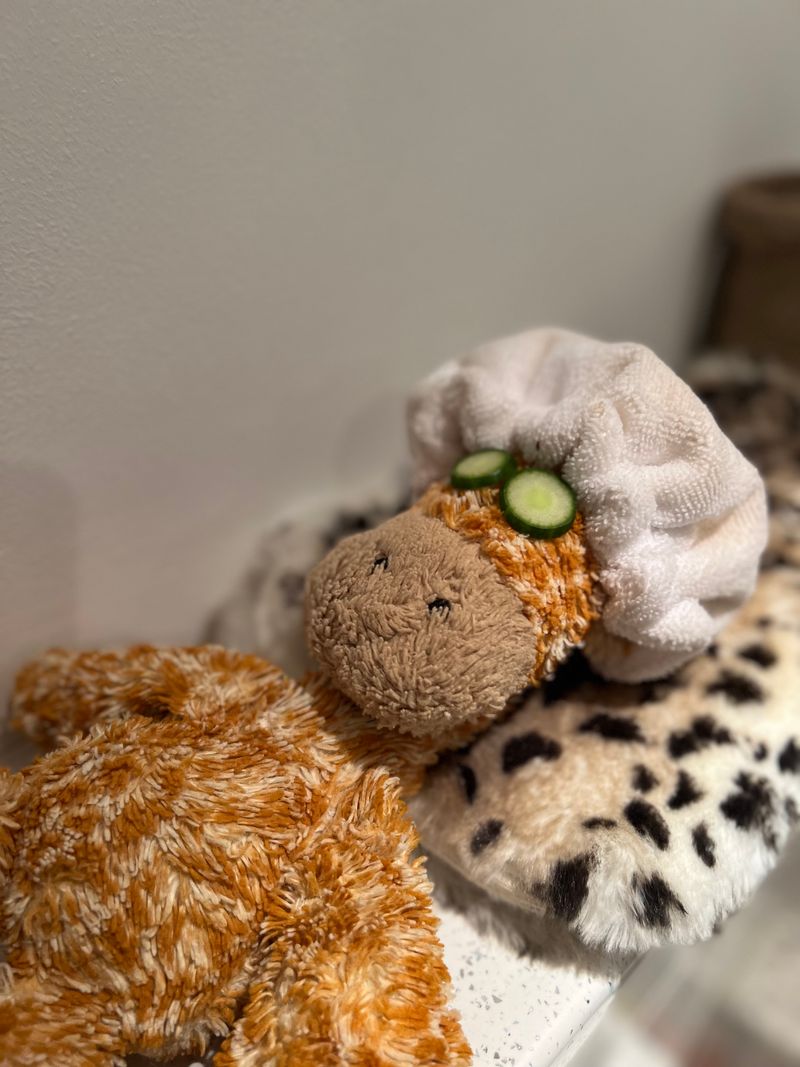
Cuddly dust collectors hide more than childhood memories! Expert thrifters leave secondhand stuffed animals on the shelf because soft toys absorb everything from their environment – skin oils, pet hair, dust mites, and household chemicals.
Plush materials can’t be thoroughly sanitized without damaging stuffing or fur. Vintage toys might contain banned materials like flame retardants. Some older stuffed animals even used real animal hair or potentially hazardous fillings. For items that children hug and sleep with, new is always the safer choice.
10. Moldy Baskets Or Woven Decor
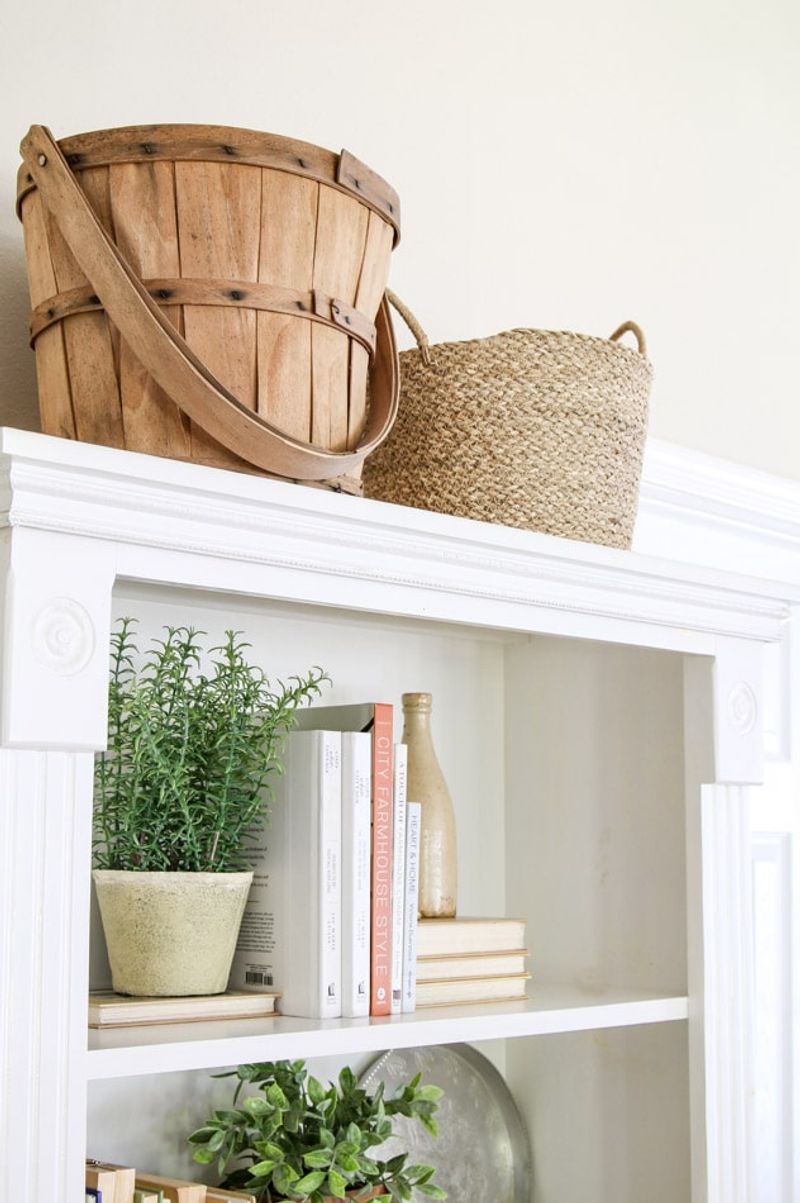
Natural materials tell natural horror stories! Experienced thrifters carefully inspect – then usually reject – woven items because natural fibers love absorbing moisture, creating perfect mold habitats in invisible inner layers.
Once mold infiltrates woven materials, it’s nearly impossible to remove completely. Those black spots aren’t just decorative flaws – they’re active spore colonies! Bringing these items home risks spreading mold to other possessions. The earthy smell you notice isn’t rustic charm, it’s actual earth decomposing in your shopping cart.

